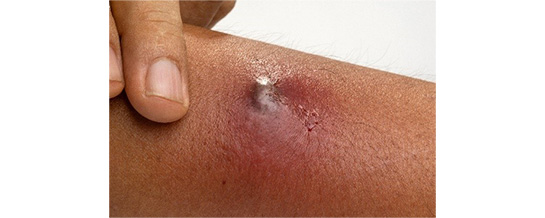How to Care for Your Child with an Abscess
This leaflet will provide you with information about abscess causes, symptoms, diagnosis, treatment and home care advice

What is an Abscess?
The abscess is a collection of pus (infected fluid) formed under your child's skin.
What are the causes of an abscess?
The abscess is caused by various, bacteria, and fungi. In some cases, it is caused by a retained foreign body (splinter, piece of glass etc.) In response to these germs/ foreign bodies, the immune system (the body’s defence system) becomes active and dispatches white blood cells to fight. Eventually, the white cells with other debris form the collection of pus.
What are the symptoms of Abscess?
The abscess can form on the skin, beneath the skin, around teeth and inside the body. On the skin, these usually start as small red bumps that increase in size and become filled with pus. In some cases, these bumps open spontaneously and release the pus.
How is abscess diagnosed?
Your child’s doctor may diagnose the abscess by looking and touching the affected area. In some cases, the doctor may order a test such as ultrasound to evaluate the depth and size of the abscess.
How is the abscess treated?
- Warm compresses multiple times a day at home in cases of a small abscess
- Incision of the abscess and drainage of the pus in hospital.
- Sometimes oral antibiotics (by mouth) may be required if there is redness and swelling of the area surrounding the abscess.
Home care advice
- Keep the wound dry and clean
- Wash the hands before and after touching the affected area.
- Avoid squeezing and scratching the area
- Ensure your child complete the course of antibiotics if prescribed.
Seek medical advice if the
- abscess is growing despite warm compresses
- abscess recurs after being drained
- wound after incision and drainage does not heal in a few days,
Go to the Emergency Department if your child has:
- Fever despite treatment.
- Increasing swelling and redness around the infected area
- Increase in discharge from the site of abscess drainage.
- Dark cola coloured urine
- Swelling around eyes and genitalia.
- Loss of appetite and vomiting

